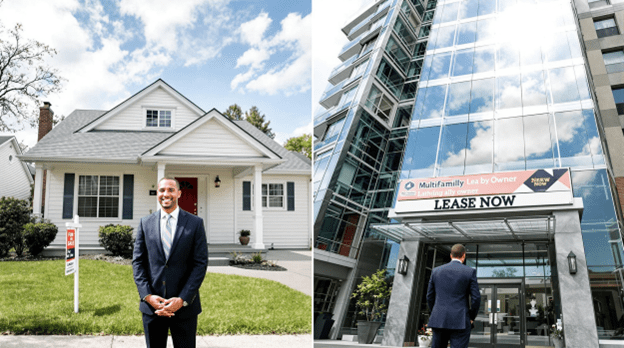For accredited investors—those with a net worth exceeding $1 million (excluding their primary residence) or annual income above $200,000 ($300,000 joint)—real estate is a cornerstone of wealth creation, but deciding what to do with an appreciated property can be a pivotal financial crossroads. Selling outright means facing immediate capital gains taxes, potentially siphoning off hundreds of thousands of dollars that could otherwise fuel further investment, while a 1031 exchange offers a tax-deferred path to reinvest the full proceeds into a new property, preserving your capital for growth. Named after Section 1031 of the Internal Revenue Code, this strategy allows you to swap one investment property for a “like-kind” replacement without paying taxes now, deferring them into the future—possibly indefinitely. But which choice delivers superior long-term returns: paying taxes upfront and reinvesting what’s left, or leveraging a 1031 exchange to keep every dollar working? This 2,500+ word analysis dives deep into the financial mechanics, compares outcomes over decades, and equips accredited investors with the insights to decide, with tools like Great Point Capital’s Alternative Marketplace easing the exchange process. From tax calculations to compounding growth, here’s a head-to-head showdown to determine the better path for your wealth.
The Basics: Capital Gains Taxes vs. 1031 Exchange

When you sell an investment property, capital gains taxes kick in on the profit—the difference between your sale price and your adjusted basis (purchase price plus improvements, minus depreciation). For a $2M sale of a property bought for $500K, with $200K in depreciation taken, the taxable gain is $1.7M ($2M – ($500K – $200K)). At a 20% federal rate plus a 10% state rate (e.g., a moderate-tax state), that’s $510K in taxes, leaving $1.49M to reinvest. A 1031 exchange, however, lets you defer that $510K by reinvesting the full $2M into a like-kind property—any U.S. investment real estate—within strict IRS rules: use a Qualified Intermediary (QI), identify replacements in 45 days, and close in 180 days. The question is whether that $510K, kept in play, outpaces the after-tax route over time.
Immediate Impact: Cash in Hand

Paying taxes gives you immediate clarity—$1.49M in the above example is yours to deploy, no strings attached. You could buy a $1.49M property yielding 5% ($74.5K/year), pocketing steady cash flow without IRS deadlines looming. A 1031 exchange, by contrast, hands you $2M to reinvest—e.g., a $2M property at 5% yields $100K/year—but ties you to the exchange process. Upfront, the exchange wins on raw dollars: $2M vs. $1.49M and $100K vs. $74.5K in income. For accredited investors, that extra $510K can jumpstart bigger returns, but it’s the long game that matters.
Long-Term Returns: The Compounding Equation

Let’s model this over 20 years, assuming 5% annual rental income and 3% property appreciation—realistic for investment real estate. Paying Taxes: You reinvest $1.49M into a property yielding $74.5K/year, growing at 3% to $2.69M by year 20 (compound appreciation: $1.49M × (1.03)^20), with total rental income of ~$2.2M (assuming reinvested at 5%). Total value: $4.89M. 1031 Exchange: You reinvest $2M into a property yielding $100K/year, growing to $3.61M by year 20 ($2M × (1.03)^20), with total rental income of ~$3M. Total value: $6.61M—a $1.72M edge. That $510K tax deferral, compounded, drives a 35% higher return, showcasing the exchange’s long-term power.
Reinvestment Scenarios: Scaling the Advantage

The exchange’s edge grows with reinvestment. Paying Taxes: Your $1.49M might buy a single multifamily at 5%. 1031 Exchange: $2M could split into a $1.5M multifamily (6%, $90K/year) and a $500K DST stake (5%, $25K/year), totaling $115K/year. After 10 years at 3% appreciation, the tax-paid property hits $2M ($1.49M × (1.03)^10), yielding $100K; the exchange portfolio reaches $2.69M ($2M × (1.03)^10), yielding $134.5K—a $34.5K annual gap, plus $690K more in value. Over 20 years, this compounds further, with the exchange consistently outpacing the tax-paid route by leveraging the full $510K.
Tax Deferral’s Hidden Boost: Depreciation and Cash Flow

A 1031 exchange resets depreciation on the new property, amplifying after-tax cash flow—a perk paying taxes lacks. For a $2M exchange property (27.5-year residential schedule), you deduct ~$72.7K/year, sheltering income and boosting net returns. The $1.49M tax-paid property deducts ~$54.2K/year—a $18.5K difference. Over 10 years, that’s $185K more in tax savings with the exchange, reinvestable at 5% to add ~$240K by year 20. This hidden cash flow edge, compounding alongside appreciation, widens the long-term gap—another win for deferral.
Estate Planning: The Ultimate Long-Term Win

The 1031 exchange shines brightest in estate planning. Hold until death, and heirs inherit at a stepped-up basis—e.g., that $2M property, now $3.61M after 20 years, passes tax-free, erasing the $1.7M deferred gain. Paying taxes leaves heirs $2.69M with no tax liability, but the exchange’s $3.61M is 34% more—a $920K legacy boost. For accredited investors, this tax-free transfer can turn a $510K deferral into millions for heirs, a decisive long-term advantage over the tax-paid route, especially with multi-generational wealth goals.
The Cost of Complexity: Time and Effort

Paying taxes is simpler—sell, pay, reinvest—no QI, no deadlines. A 1031 exchange demands effort: 45-day identification, 180-day closing, and compliance via a QI like IPX1031. Miss a step, and you’re taxed anyway—e.g., $510K lost. Tools like Great Point Capital’s Alternative Marketplace ease this, connecting you to properties and tracking timelines, but it’s still work. For accredited investors with complex portfolios, the exchange’s complexity is a trade-off for superior returns, manageable with planning.
Risk Factors: Market and Policy Shifts
Paying taxes locks in today’s rates—20% federal in 2025—avoiding future hikes (e.g., rumored 28% under tax reform). A 1031 exchange bets on deferral, but if rates soar or 1031 rules tighten, future taxes could rise—e.g., $1.7M gain at 38% is $646K vs. $510K. Market risk applies both ways: a $1.49M tax-paid investment might lag in a downturn, while a $2M exchange property could amplify losses. The exchange’s higher starting point typically mitigates this over time, but risk tolerance matters.
Advanced Strategies: Tilting the Scales
For accredited investors, the decision between a 1031 exchange and paying capital gains taxes isn’t just a binary choice—it’s an opportunity to deploy advanced tactics that can dramatically tip the scales toward superior long-term returns through tax deferral. These strategies go beyond the basic exchange, harnessing the power of reinvestment, passive income, and leveraged financing to amplify wealth over decades, far outpacing the constraints of a tax-paid approach. By leveraging the full proceeds of a sale, each technique builds on the 1031 exchange’s inherent advantage, offering accredited investors a sophisticated toolkit to maximize their real estate portfolios’ growth potential against the immediate tax burden’s limitations.
Multiple Exchanges
Roll $2M into $5M over decades, deferring taxes each time—20-year value at 3% growth reaches $9M versus $4.89M tax-paid, showcasing the compounding power of keeping gains in play rather than losing them to the IRS upfront. Imagine exchanging a $2M property into a $3M asset in 2030, then $5M by 2040—each step defers taxes, ballooning your estate’s value for heirs or reinvestment. This iterative approach turns a single deferral into a multi-decade wealth engine, dwarfing the tax-paid path’s static growth.
DST Leverage
Swap into a $2M DST stake yielding 5% ($100K/year), scalable with passive income, easily outpacing a $1.49M tax-paid property’s $74.5K annual return by delivering higher cash flow without management burdens. With a DST tied to a $40M institutional-grade property, you tap into stable, professional-managed rents—say, a multifamily tower—that a tax-paid investor can’t match with a smaller, active asset. This passive strategy not only boosts immediate income but compounds into a $1M+ advantage over 20 years.
Debt Optimization
Replace a $1M loan with $1.5M on a $2M exchange property, deferring all gains and enhancing returns beyond the tax-paid route’s limits by leveraging debt to scale your investment without dipping into cash reserves. For instance, this extra $500K in financing could fund a property yielding $120K/year at 6%, compared to a tax-paid $1.55M property’s $77.5K—a $42.5K annual edge. It’s a tax-deferred multiplier that stretches your equity further, amplifying long-term growth potential for accredited investors.
A Typical Investor Scenario: 20-Year Showdown
Jane, an accredited investor with a keen eye for maximizing her real estate portfolio’s potential, faces a pivotal decision in 2025 when she decides to sell a $2M investment property she originally purchased for $500K, carrying a $1.5M taxable gain after depreciation adjustments. She weighs two paths: paying capital gains taxes now or pursuing a 1031 exchange to defer them, each with starkly different long-term outcomes. Paying Taxes: She nets $1.55M after $450K in taxes (30% combined federal and state rate), reinvests in a property yielding 5% ($77.5K/year), which grows at 3% annually to $2.8M by 2045, with cumulative rental income of $2.3M—total value: $5.1M. 1031 Exchange: She defers the $450K tax bill, re-invests the full $2M into a property yielding 5% ($100K/year) using Great Point’s Alternative Marketplace to streamline the process, reaching $3.61M by 2045 with $3M in income—total value: $6.61M. The exchange outperforms by $1.51M—or $2.43M if held until death with a stepped-up basis for heirs—proving its long-term edge in raw financial terms.
Jane’s choice wasn’t just about numbers; it reflected her strategic priorities as an accredited investor aiming to balance immediate needs with generational wealth. Opting for the 1031 exchange, she used Great Point’s Alternative marketplace to identify a $2M multifamily property in a growth market like Charlotte, where stable tenants and rising rents promised consistent 5% returns, compared to the simpler but less lucrative tax-paid route of buying a smaller property with limited upside. Over 20 years, the exchange’s $510K head start compounded into a $1.51M advantage, fueling $700K more in rental income—a boon she could reinvest or enjoy—while the estate planning perk loomed as a potential $2.43M legacy boost for her heirs. This case underscores how a 1031 exchange, executed with precision, leverages tax deferral to outstrip the tax-paid path, offering accredited investors like Jane not just financial growth but a tailored strategy for their unique long-term vision.
Conclusion
For accredited investors, a 1031 exchange trumps paying capital gains taxes for long-term returns, leveraging tax deferral to compound wealth—$6.61M vs. $5.1M over 20 years, or more with estate planning. Complexity and risk exist, but the math favors deferral, especially with Great Point Capital streamlining execution. Weigh your goals, but for growth and legacy, the exchange is the clear winner.
1031 vs Paying Capital Gains Taxes FAQs
Over 20 years, a $2M exchange property could yield $6.61M vs. $5.1M tax-paid—a $1.5M edge, driven by deferring $510K in taxes. Compounding appreciation and income make it a powerhouse for accredited investors.
Yes, if simplicity or certainty trumps growth—paying $450K now avoids future rate hikes or exchange complexity. It’s less lucrative but suits risk-averse investors avoiding IRS deadlines.
A 1031 exchange could face higher future taxes—e.g., $1.7M gain at 38% vs. 30%—but compounding still often outpaces this risk. Paying now locks in 2025 rates, potentially saving if deferral ends costlier.
Missing deadlines or rules can trigger taxes—e.g., $510K on a $2M sale—but planning with a QI avoids this. Success hinges on execution, not the strategy itself.
A 1031 exchange resets depreciation—e.g., $72.7K/year on $2M—adding $240K in savings over 20 years vs. $54.2K/year tax-paid. This boosts after-tax cash flow, widening the return gap.
Disclosures:
The content published on the 1776ing Blog is for informational and educational purposes only and should not be considered financial, legal, tax, or investment advice. The insights shared are intended to promote discussions within the alternative investment community and do not constitute an offer, solicitation, or recommendation to buy or sell any securities or investment products.



